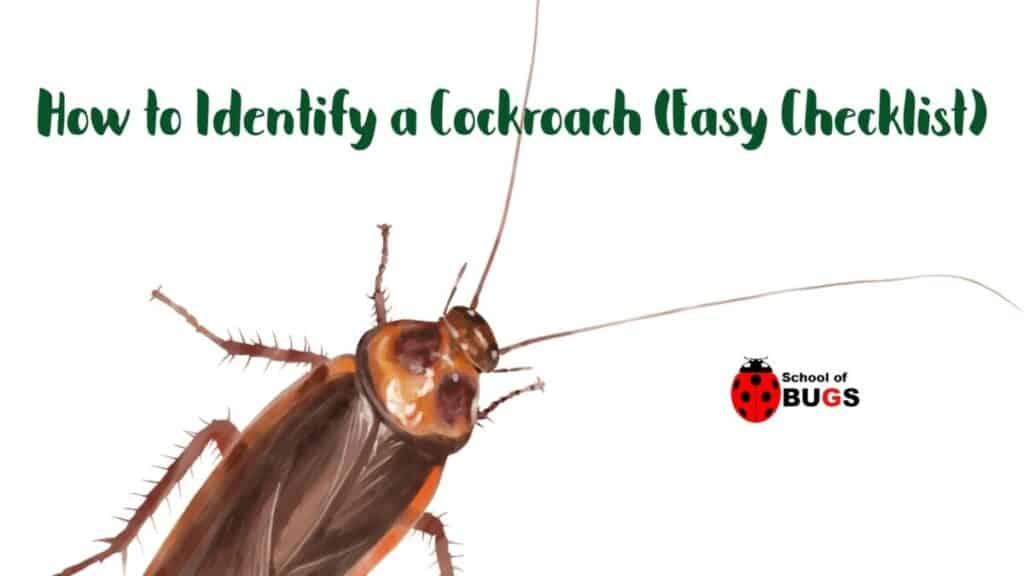
Identify a cockroach from other insects by looking for a bug that’s a half-inch to two inches long, with a shiny, reddish-brown shell and tightly folded wings.
However, it is almost easier to identify a cockroach by understanding what it does not look like, as there are more than 4,500 cockroach species in existence.
The sooner you can learn to spot a cockroach, the better off you’ll be, as these invasive insects can make you sick if they stick around too long.
Use this easy checklist to quickly spot a cockroach and determine whether it’s a pest or a harmless bug:
- It’s a half-inch to two inches in length with a reddish-brown shell
- The body shape is wide and oval shaped
- It has wings closed tightly against its back, but it cannot fly
- The shell of the bug is shiny
- You spot more of the same bugs late at night
- A musky scent is present in your space
- You see egg casings or insect droppings
What does a cockroach look like?
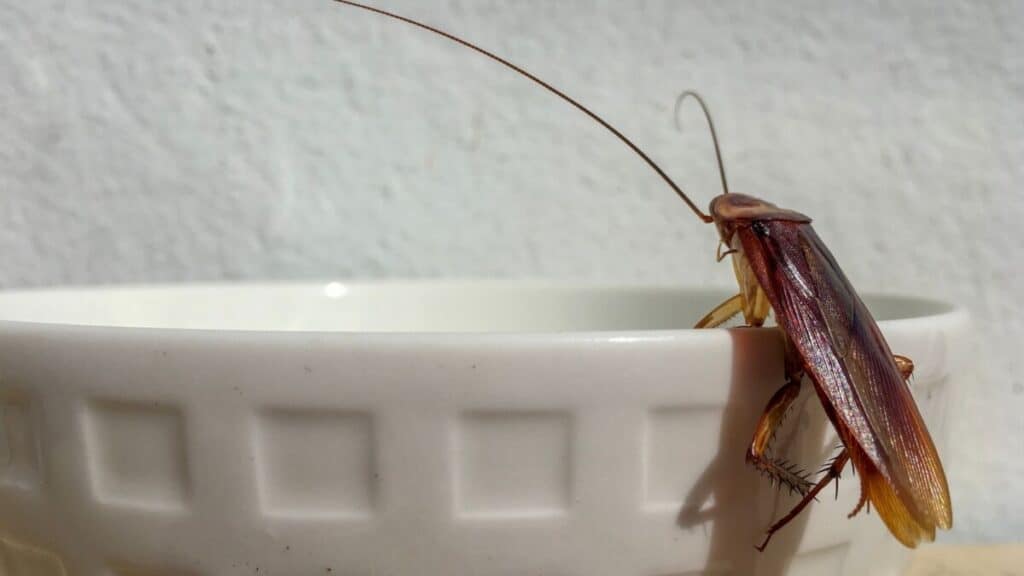
A cockroach is generally about an inch long with a wide, oval-shaped reddish-brown body, six spiny legs, antennas, and flat wings.
However, there are thousands of cockroach species, each with their own unique appearance, so it is important to understand all the general attributes of a roach.
To spot a cockroach, you’ll want to look out for certain physical traits but also investigate any suspicious odors or damage in your space.
Physical Attributes
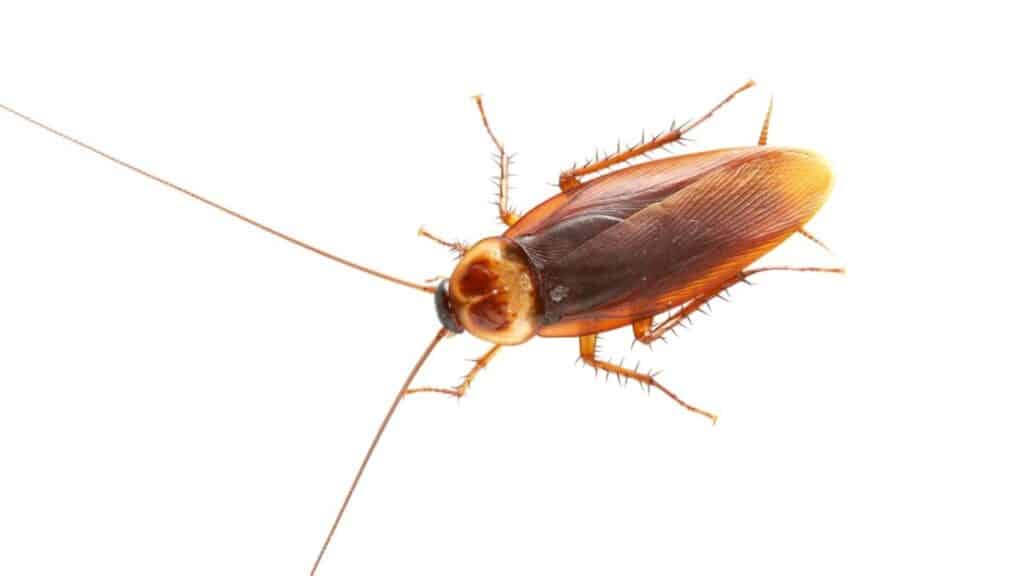
If you find an actual insect that you suspect of being a cockroach, look for these characteristics:
- Six spiny legs that help the insect crawl up walls and ceilings
- Wings that lie flatly and tightly to their back (although not all female species have wings)
- A flat, oval-shaped body with a shield-like pronotum, the first segment of the bug’s thorax behind its head and before its abdomen
- A mouth that points downward and slightly backward
- A shiny body that is oily and warm to cool to the touch
Other Signs That You’re Dealing with Cockroaches
Only 30 cockroach species, or approximately one percent, are considered invasive insects that can damage your home, office, or other space.
But whether you can identify a cockroach insect or not, there are other ways to tell if you’re dealing with cockroaches in your space.
Musky Scent
If you have a cockroach infestation, you may smell it before you see any insects. A single cockroach won’t carry much of ascent, but once roaches start to multiply, they’ll leave behind decaying food, bacteria, and dead cockroaches.
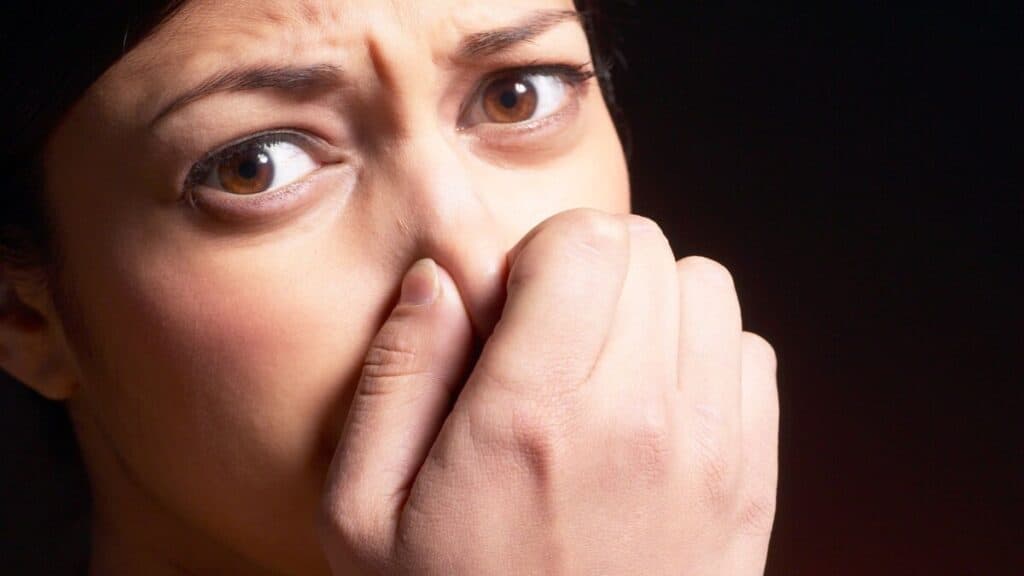
The musky scent will be evident if you have an infestation.
Droppings
Depending on the type of cockroach you’re dealing with, you may see cockroach droppings around your space, especially in corners of the floor, on top of cabinets, and underneath appliances.
The droppings can range from the size of rice to peppery specks, and even brown stains. Remember, these bacteria can make you sick, so always wear gloves if you’re trying to clean up a cockroach mess.
Egg Casings
Egg casings can range in color and size, from reddish-brown to dark brown, shaped like a bean and usually less than a quarter of an inch in length.
Sometimes, these egg casings have ridges along with them, and sometimes they’ll still have eggs inside. If that’s the case, flush the egg casing down the toilet and call roach control immediately, as this is one of the first signs of infestation. A single egg casing can hold up to 50 eggs.
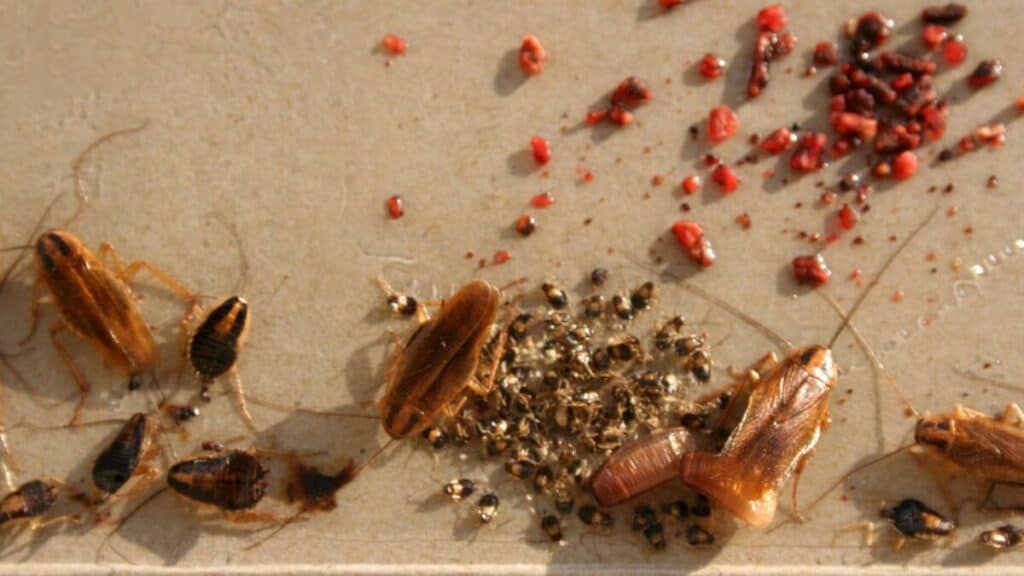
Neighborhood Infestations
If you’ve noticed the neighbors tenting their homes or see roach control companies nearby, there’s a strong chance that you, too, have a roach problem on your hands or could soon.
If you haven’t noticed any signs of roaches, take proactive steps to keep it that why by properly cleaning up food messes, trimming vegetation from around your home or office, and keeping outdoor trashcans away from the exterior walls of your house.
Do male and female cockroaches look the same?
Male and female cockroaches often look like entirely different bugs. Males are usually smaller but often have larger wings. Females are larger and may not have wings at all. These details will vary by species.
Do adult and baby cockroaches look the same?
Baby cockroaches do not look the same as adults but may have similar markings. Young cockroaches are called nymphs, and they’re born from an egg that’s enclosed in an egg casing called an ootheca.
They’ll have a paler color than their parents, and they won’t have wings. They’ll also be smaller.
How many kinds of cockroaches are there?
There are 4,500 species of cockroaches, but only 30 are invasive pests.
Some of the more commonly found cockroaches that can cause damage and sickness include German Cockroaches, Oriental Cockroaches, American Cockroaches, Smokybrown Cockroaches, Wood Cockroaches, Brownbanded Cockroaches, Asian Cockroaches, and Australian Cockroaches.
These roaches all differ slightly in appearance and have preferred geographics.
German Cockroaches
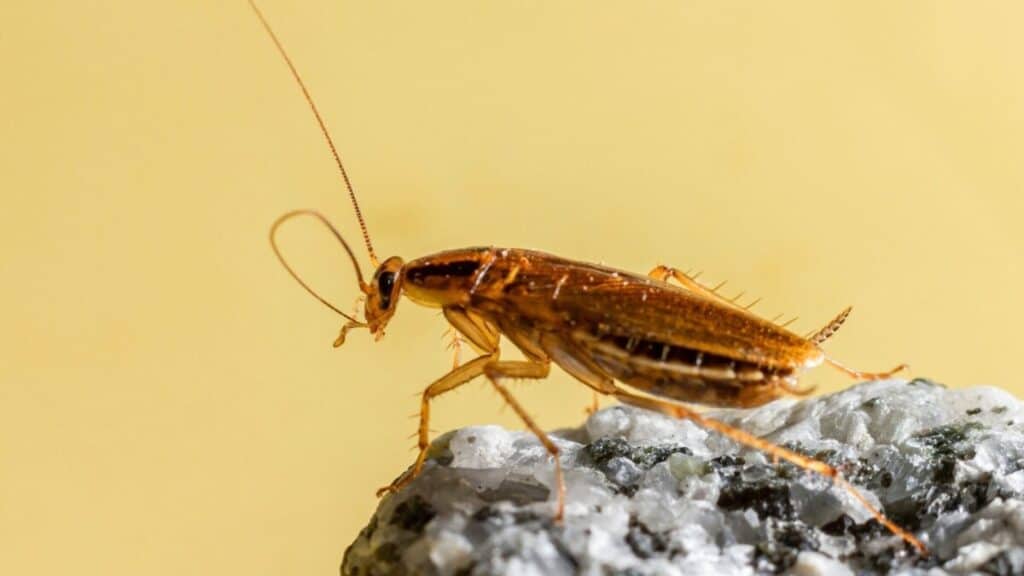
German Cockroaches are small at just under half an inch long, but they’re the most common invasive roach worldwide.
They live just about anywhere and can find their way into homes through grocery bags, furniture, boxes, pipes, and more.
They’ll hang around kitchens, laundry rooms, and bathrooms because they refer warm, humid areas. And if there’s food, watch out.
They’ll eat right through your pantry. A single cockroach can have more than 30,000 nymphs in a year, making them a very serious problem that makes early detection even more important.
Oriental Cockroaches
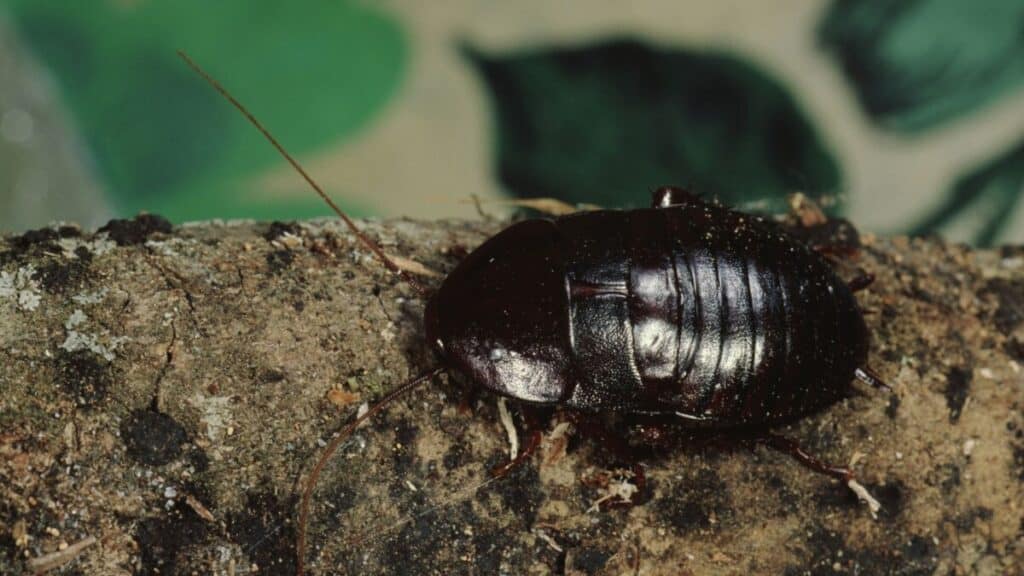
Oriental Cockroaches can’t fly, but they’re still one of the most dangerous cockroaches because of the bacteria they spread from their food sources.
Oriental Cockroaches prefer feces, trash, and decaying animals for their meals, and they’ll spread bacteria simply by walking across something.
They smell so bad, though, that you’ll know if an Oriental Cockroach has crossed a surface or food source in your home.
Oriental Cockroaches are around an inch long, dark brown to black, and males have wings that are around 25 percent shorter than their bodies.
Females and nymphs do not have wings. This cockroach prefers coastal regions.
American Cockroaches
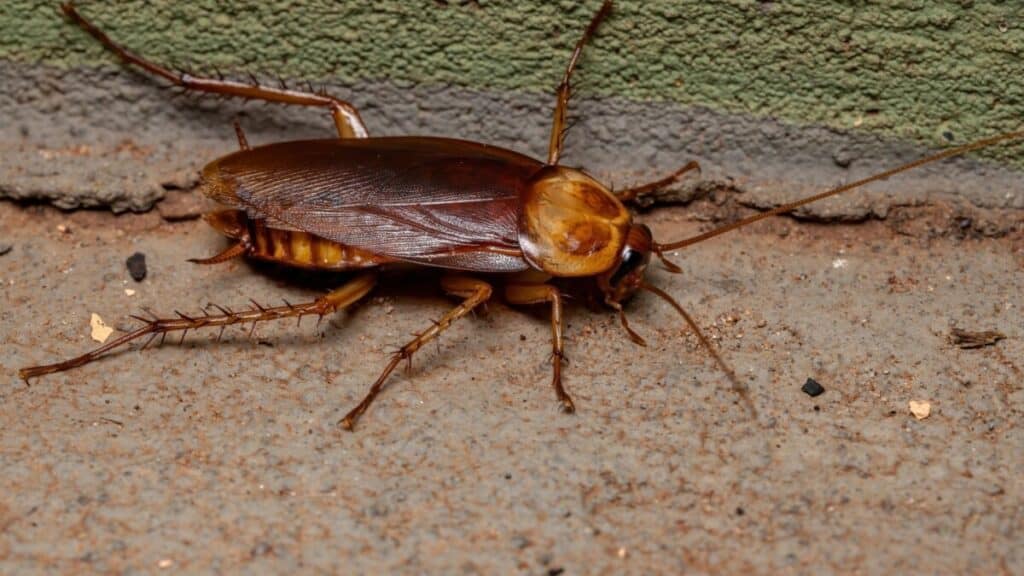
You may hear someone refer to the American Cockroach as a Palmetto Bug but make no mistake: this is a nasty little cockroach that will spread disease and could even trigger asthma in some people.
These roaches move fast and are very big, stretching almost two inches or more in length.
They’re native to the African tropics but are commonly found across the US. You can spot an American Cockroach by its reddish-brown color, big wins, and yellow band around their thorax. They rarely fly.
Smokybrown Cockroaches
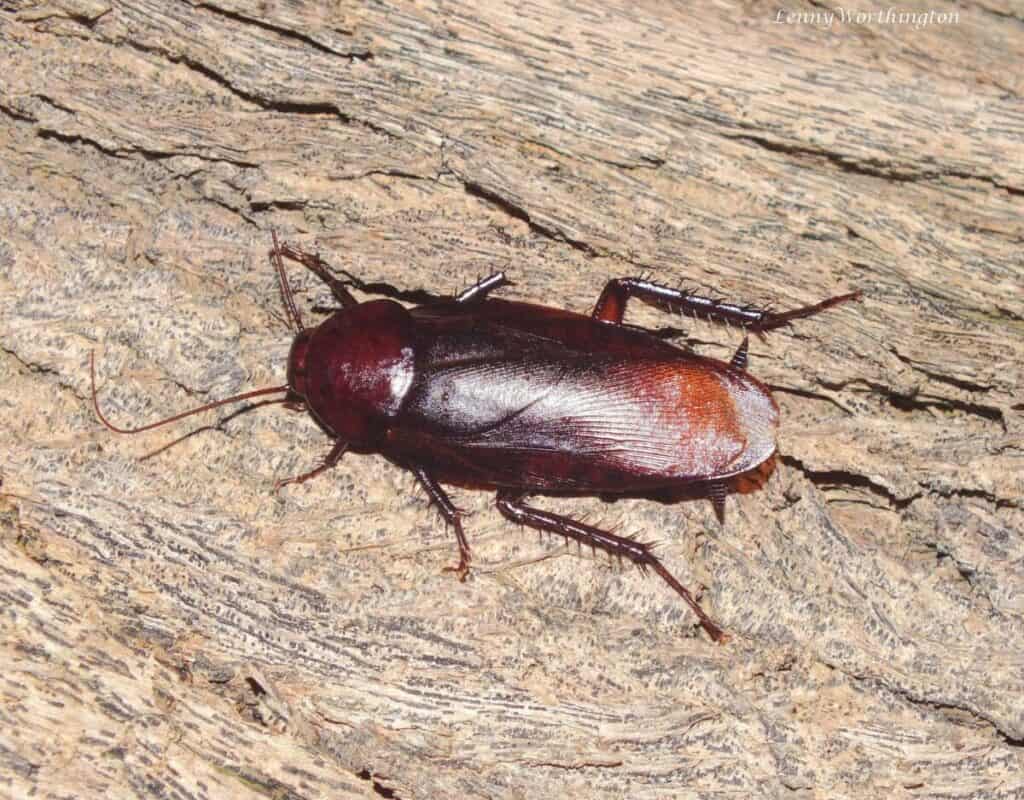
Smokybrown Cockroaches need to live near – but not in – water. They’re mostly found in the southeastern regions of the US, hanging around in planters and woodpiles.
If any vegetation is touching parts of your space, they’ll use it to get into walls, plumbing, and openings. They’re big at just over one and a half inches long and have a body that looks black.
Their wings will be larger than their bodies.
Wood Cockroaches
Wood Cockroaches will thrive in moist, wooded conditions, so homes near forests are at higher risk of an invasion.
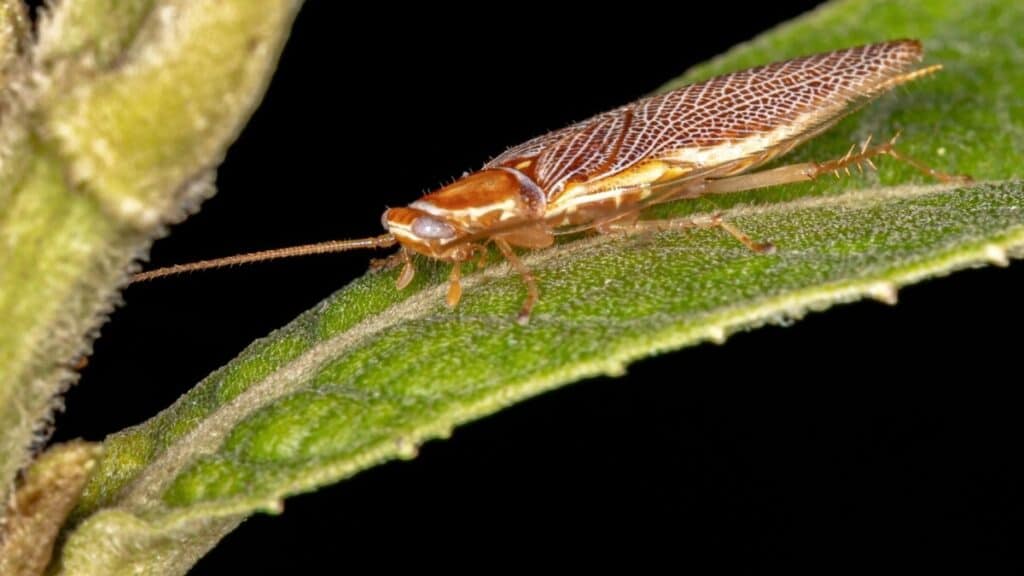
They carry bacteria that can infect your food and surfaces, and are found across most of the US, Canada, and Mexico.
They’re attracted to light and can make their way into your home through firewood. Wood cockroaches often have white-edged wings, a brown body, and are about one inch in length.
Brownbanded Cockroaches
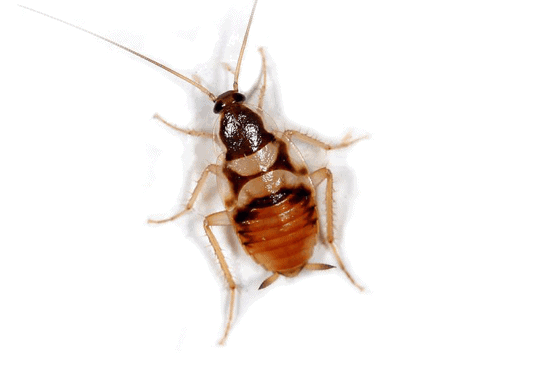
Female Brownbanded Cockroaches can’t fly, but males do. This species of cockroach has a narrower body than most cockroaches and light brown or yellow stripes across their bellies and wings.
Males will be a lighter, golden tan color and females will appear darker brown.
Brownbanded Cockroaches can be found across the US, and they’ll make their way into your house in groceries, food containers, furniture, and even electronics.
Asian Cockroaches
The Asian Cockroach is just about a half-inch long and has two dark-colored stripes that run down its back. This makes it look like the roach’s body is bordered with white stripes.
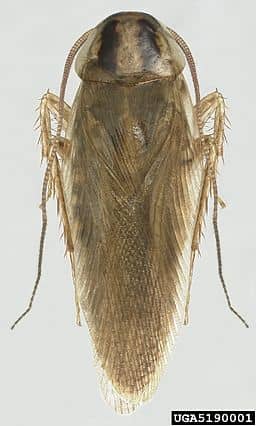
Asian cockroaches are often found in Florida and other southern states in the US, where they thrive in the humidity and heat.
Unlike other cockroaches, this species loves light and will fly toward it. They also like mulch, garbage, and anything that’s decomposing, and they’ll find whatever area is warmest and most humid to hide.
Australian Cockroaches
Australian Cockroaches have a tan ring around their back, just beneath their head, and they’re one of the bigger roaches you’ll see at an inch and a quarter length.
They prefer the outdoors but will invade your house on occasion to find food and warmth.
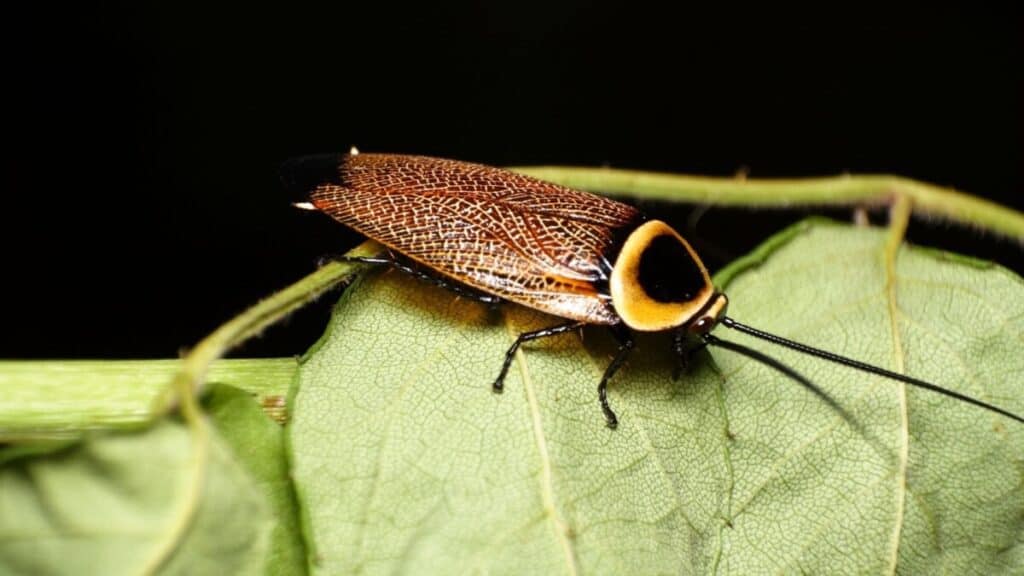
This winged roach can fly, giving it the ability to spread bacteria and contaminate your kitchen and food. You’ll find the Australian Cockroach in lots of places, including in southern states and other damp areas.
Where will I find cockroaches?
Geographically, cockroaches live on every single continent on planet Earth, except for Antarctica.
In a building, cockroaches live ….
Is it possible to have cockroaches in your home and never see them?
It is possible that you have cockroaches in your personal space even if you’ve never seen them because cockroaches avoid light as much as possible. Cockroaches are nocturnal and very good at hiding.
Are there bugs that look like cockroaches but aren’t?
There are many bugs that may look like a cockroach at first but learn to spot the differing behaviors and appearances and you’ll quickly rule these out (or in!).
June Bugs ; Other Beetles
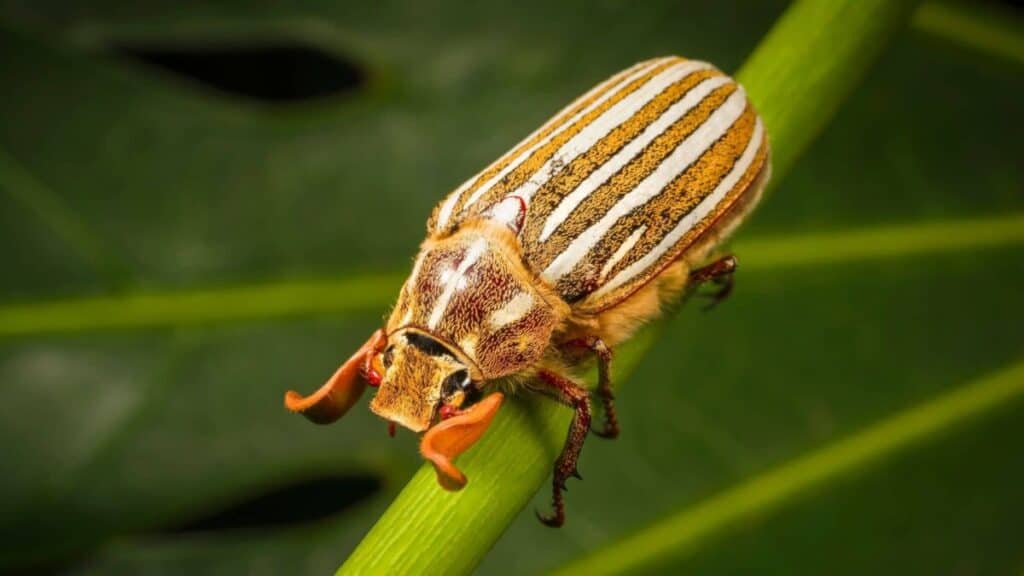
Some people mistake beetles for cockroaches because some beetles have that same reddish-brown hue and size.
June Bugs are almost dead ringers for a cockroach. However, a beetle will have harder wings, smaller heads, and shorter antennae.
They’ll usually eat plants, and tend to be attracted to light, whereas most roaches hide from it. June Bugs can fly, but not too well. They’ll often run into walls or clumsily skitter across the ground.
You may find out the hard way that you’re seeing a beetle and not a cockroach, as some beetles bite but cockroaches very rarely do.
Beetles prefer to live outside, and as we’ve learned, cockroaches prefer the warm, cozy, and humid environment of your house or office.
Giant Water Bugs
Your first clue that you are dealing with a water bug is whether it can survive in water. Cockroaches cannot live in water, and water bugs belong there.
Water bugs can also be much larger than a cockroach – up to four inches long – and they don’t have any antennae.
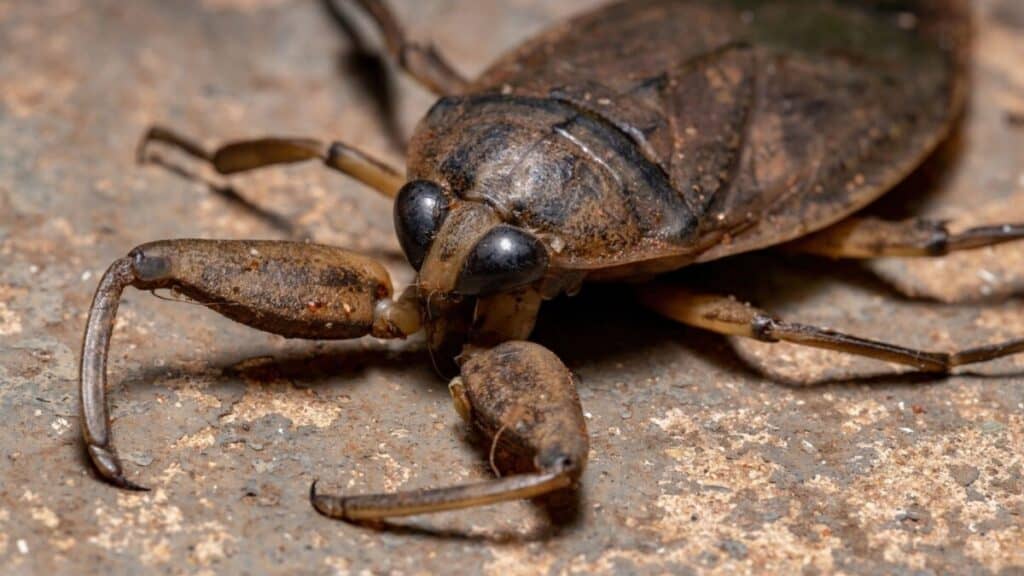
They are attracted to light, and rarely make their way into homes. They survive off aquatic life, unlike garbage and feces like cockroaches.
Bed Bugs
Bed bugs are much smaller than adult cockroaches but can be hard to differentiate from a cockroach nymph.
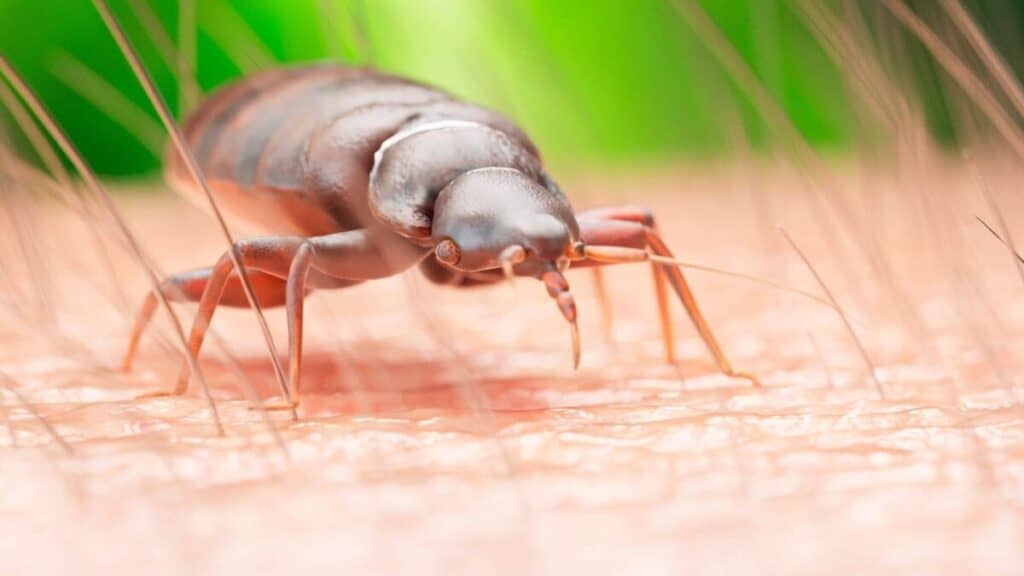
Bed bugs are shorter and rounder than cockroaches, have shorter antennae, and will be a darker reddish-brown than the paler cockroach nymph.
Crickets
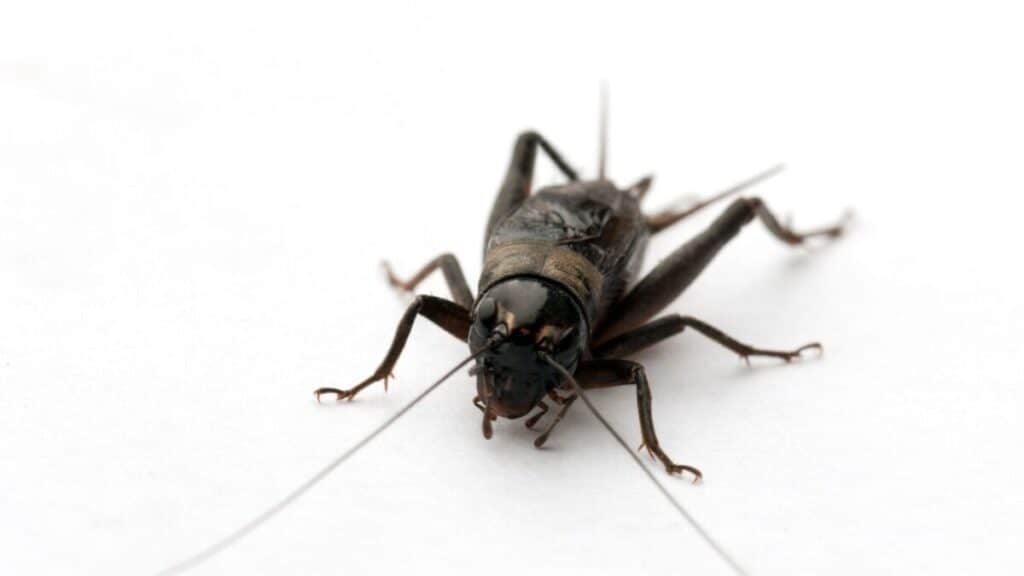
Crickets have a more cylindrical body than cockroaches, which are flatter and more oval-shaped. Crickets also have very long back legs made for jumping, and it’s rare that you’ll see several of them in your house.
Termites
While termites are a type of cockroach, they look very different. Termites are much smaller and can be white to light brown.
They’ll be more comfortable on your walls than out in the open, even at night. And they prefer to feast on wood, plants, and leaves.
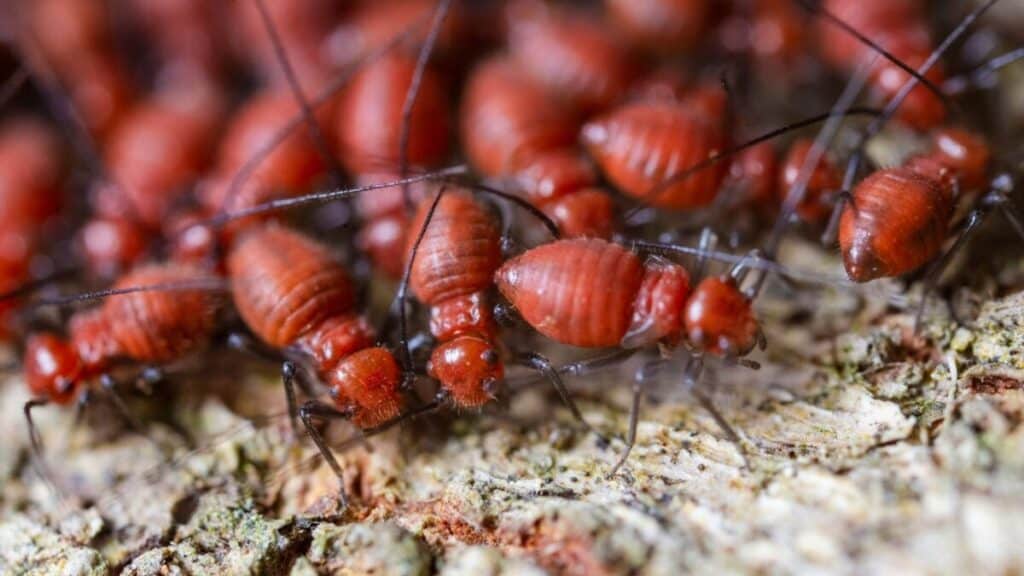
They also prefer to live in colonies with many other termites, whereas cockroaches can often be found scurrying around on their own.
In Conclusion
Cockroaches have distinct legs, coloring, markings, shapes, and behaviors that make them easy to spot and differentiate from other common insects.
From their reddish-brown color, unique shape, and the mess they leave behind, cockroaches leave clues to help you find them.
When in doubt, always call a professional to help you identify the pest and develop a plan to remove it.
Alright, that’s it for this article, here are a few hand-selected articles that you might also find interesting reads:
Cockroaches That Look Like Bed Bugs – 3 Common ExamplesCockroaches That Look Like Crickets – Easy To Miss
The Color of Cockroaches – Red, White, Brown and MANY more!
Recent Posts
Tiny Black Bugs in Bathroom NO WINGS: What They Are and What to Do!
Finding tiny black bugs in your bathroom can be uncomfortable, to say the least. Especially if they are persistent, or they appear in very large numbers, which they often like to do. When it...
Tiny Black Bugs in Plant Soil - What Are They & What To Do About It
A short horror story: You get a new houseplant. You do your best to take care of it. You’ve ensured that it has the right soil, the right amount of sun, it gets enough water. And then one day, you...

